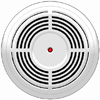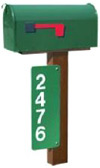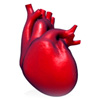|

|
|
|
|
 |
Smoke Alarms: Smoke alarms save lives.
Most people that perish in fires are first overcome by smoke and then pass
out. 85% of all fire deaths occur in the home and the majority occur at
night, when people are sleeping. Here are a few tips from the National Fire
Protection Association (NFPA) that can save your life:
-
For smoke alarms with batteries, change batteries at least once per year
or when the smoke alarm chirps to warn the battery is dying.
-
Change the batteries on a notable day to help you remember (Daylight
Savings Time, a holiday, etc.).
-
Test units at least monthly. Test units using the test button or an
approved smoke substitute.
-
Clean the units in accordance with the manufacturer's recommendations.
-
Do not use an open flame device to test the unit.
-
In older homes, at a minimum, smoke alarms should be placed outside each
sleeping area and on each level of the house, including the basement.
-
In new homes, smoke alarms are required in all sleeping rooms, according
to the National Fire Alarm Code.
-
Smoke alarms should be mounted according to the manufacturer’s recommendations.
-
Smoke alarms should be replaced every ten years, sooner if testing
reveals a failure.
|
|
|
 |
House Numbers: To ensure the fastest
response time, please be sure that your house number is visible from the
road. We recommend placing the numbers on your mailbox or a post near your
driveway. Numbers should be at least three inches high and should have a
contrasting color to the mailbox or post they are mounted on. Reflective
numbers are best. If the mailboxes on your street are all on one side of the
street, please also put your number on your house. Without this, it can take
us precious seconds to determine which mailbox belongs to you. Next time you
approach your house, especially at night, see if you can easily spot your
number. Please keep in mind that we have likely never been to your house
before and the only way we can help you is to see your number. This is
critical us, the ambulance, and the police.
Reflective mailbox signs displaying your house number are available from the
Bolton Fire Department for $20.
|
|
|
 |
Children and Driveways: Every year, more
than 2,400 children in the United States are victims of "back over"
accidents. Many of these accidents are attributed to something called the
"bye-bye" syndrome. A child wanting to say goodbye to a parent or visitor
will sometimes run to the backing vehicle, not realizing the danger. SUVs
are high on the list of vehicles involved in these accidents because of
their limited rear-sight visibility. Fortunately, this type of accident is
almost completely avoidable. Knowing where children are, backing very
slowly, giving full attention to the backing maneuver, looking while backing,
and even having a "spotter" when you can to help you back will minimize the
risks.
|
|
|
 |
Candle Flames: Candles are wonderful, as
long as the fire stays on the wick. They can be safely enjoyed when precautions are taken. Candles cause 5% of all home fires. In 2002,
approximately 18,000 home fires were attributed to candles, resulting in 130
deaths and 1,350 injuries. 40% of these fires started in the bedroom. Home candle fires
have tripled since 1990. December has twice as many candle fires as the
average month. Half of these fires are due to combustibles being too close to the
candle. Here’s what the experts recommend;
-
Extinguish all candles when leaving the room or going to sleep.
-
Keep candles away from things that can catch fire like curtains, clothes,
books, or towels.
-
During power outages, avoid carrying a lit candle. Use a flashlight.
-
Keep wicks trimmed to one-quarter inch and extinguish taper and pillar
candles when they reach two inches from the holder. Votives and containers
should be extinguished before the last one-half inch of wax melts.
-
Use candle holders that are sturdy, won't burn, and will catch the melting
wax.
|
|
|
 |
Carbon Monoxide: During the winter
months, furnace and carbon monoxide incidents greatly increase. The best way
to minimize furnace problems is to have the unit regularly serviced. No home
should be without carbon monoxide (CO) detectors. Often called the silent
killer, carbon monoxide is an invisible, odorless, colorless gas created
when fuels (such as gasoline, wood, coal, natural gas, propane, oil, and
methane) burn incompletely. In the home, heating and cooking equipment that
burn fuel are potential sources of CO. Vehicles and generators running in or
immediately adjacent to an attached garage can also produce dangerous levels
of CO. Symptoms of CO poisoning include severe headache, dizziness, mental
confusion, nausea, or faintness. Many symptoms are similar to the flu. Here
are a few safety tips to avoid this threat:
-
Install CO alarms in your home to provide early warning of accumulation.
-
CO alarms should be installed in a central location outside each sleeping
area or potential sleeping area (where guests might sleep).
-
Test CO alarms at least once a month. Replace them per the manufacturer's
recommendations.
-
If you need to warm your vehicle, remove it from the garage after starting
it, then shut the garage door. Do not run a vehicle, generator, or other
fueled engine or motor indoors, even if the garage doors are open. Make
sure the exhaust pipe is not blocked by snow.
-
Only use barbecue grills outside. Never use them in your home or garage.
-
Have fuel burning household heating equipment (fireplaces, furnaces, water
heaters, wood and coal stoves, space and portable heaters) and chimneys
inspected by a professional every year before the cold sets in.
-
Never use your oven to heat your home.
If
your CO alarm sounds:
-
Check the battery if it is a battery-powered intermittent alarm.
-
If it is a steady alarm, or you are unable to determine what kind of alarm
it is, evacuate the dwelling. Report the alarm warning by calling 911. Do
not re-enter until the responding agency says it is alright to do so.
-
Call a qualified technician to inspect all equipment.
|
|
|
 |
Gasoline at Home: We all have gasoline.
We usually store it in a small container somewhere in the garage. There are
several thousand home gasoline fires each year. Many do not end well. They
are caused by unintentional spills, using gasoline to clean or wash parts,
keeping gasoline too close to a heat or ignition source, children playing, improper
storage or fueling, and using gas to kindle a fire. A gasoline fire can be an instant, unforgiving
event. It's actually the gasoline vapors that burn. You cannot see them and
they can unknowingly be all around you. Gasoline has a flash point
temperature (at which it will burn or explode by flame) of about -45 degrees. It has an
ignition temperature (at which a hot surface, absent of
flame, will cause gas to burn or explode) of about 405 degrees. The muffler
on your power equipment is far hotter than 405 degrees. Here's what the NFPA and the American Petroleum Institute recommend:
-
Keep gasoline out of the sight and reach of children. Children should never
handle it. Burns by ignited gasoline are a leading cause of injury to
teenage boys.
-
If a fire does start while handling gas, leave the area and immediately
call for help. Do not try to extinguish it or stop the flow of gas.
-
Do not use or store gasoline near ignition sources (electrical devices, oil or
gas fired appliances or anything with a pilot flame or spark). Gasoline
vapors are invisible, heavier than air, and will creep along the
floor.
-
Store gasoline outside the home in a garage or shed in tightly closed metal or
plastic containers approved by an independent testing lab or local or state
fire authorities. Never store it in glass bottles or unapproved plastic
containers (such as milk containers).
-
Store only enough gas to power your equipment. Let equipment cool before
refueling.
-
Do not smoke within fifty feet of gas.
-
Fill portable containers outdoors with the container on the ground. Never
fill them inside a vehicle or while still in the bed of a pickup truck.
-
Use caution when fueling automobiles. Do not get in and out of the
automobile while fueling. Although rare, an electrical charge on your body
(such as static electricity) could spark a fire, especially during the dry winter
months.
-
Never use gasoline inside the home or as a cleaning agent.
-
Clean up spills promptly and discard clean-up materials properly.
-
Never use gasoline in place of kerosene.
|
|
|
 |
Cardiac Arrest: Most of the more than
425 calls we respond to each year are requests for emergency medical
services. The varieties of emergencies are endless. One of the more
common calls is for chest pain, difficulty breathing, or cardiac arrest. If
you have these symptoms, call 911 immediately. Do not wait, do not hesitate.
Seconds count. Today, heart attack
victims can benefit from new medications unavailable in years past.
Clot-busting drugs can stop some heart attacks in progress, reducing
disability and saving lives. But to be effective, these drugs must be given
relatively quickly after heart attack symptoms first appear. Don't delay,
get help right away. Some heart attacks are sudden and intense, but most
start slowly, with mild pain or discomfort. Often people affected are not
sure what's wrong and wait too long before getting help. Here are signs that
can indicate a heart attack is happening:
-
Chest discomfort. Most heart attacks involve discomfort in the center of
the chest that lasts more than a few minutes or that goes away and comes
back. It can feel like uncomfortable pressure, squeezing, fullness, or
pain.
-
Discomfort in other areas of the upper body. Symptoms can include pain or
discomfort in one or both arms, the back, neck, jaw, or stomach.
-
Shortness of breath. This may occur with or without chest discomfort.
-
Other signs include breaking out in a cold sweat, nausea, or
lightheadedness.
As
with men, the most common heart attack symptom in women is chest pain or
discomfort. Women, however, are somewhat more likely than men to experience some
of the other common symptoms, particularly shortness of breath,
nausea and vomiting, and back or jaw pain. If
you or someone you're with has chest discomfort, especially with one or more
of the other signs, don't wait before calling for help. Calling 911 is almost always the fastest way to get lifesaving treatment.
Emergency medical service staff can begin treatment when they arrive, up to
an hour sooner than if someone gets to the hospital by car. They are also
trained to revive someone whose heart has stopped. Patients with chest pain
who arrive by ambulance usually receive faster treatment at the hospital. If you can't access the emergency medical services (EMS), have someone
drive you to the hospital right away. If you're the one having symptoms,
don't drive yourself unless you have absolutely no other option. If an automated
external defibrillator (AED) is available and someone trained to use it is
nearby, involve them.
|
| |
|
|